Anzac Tree Daisy Project
In 2017 the latest exotic weed to be assessed as a serious threat to our ecosystems is Montoana hibiscifolia, known as Anzac Tree daisy.
It grows rapidly and invades rainforest margins, gullies, disturbed areas and road embankments (Department of Employment, Economic Development and Innovation, 2010). The plant is a prolific seeder and shows potential to be highly invasive in the riparian zones and fringes of the local dry rainforests and in the more open sclerophyll forests of the ridges across the catchment divides.
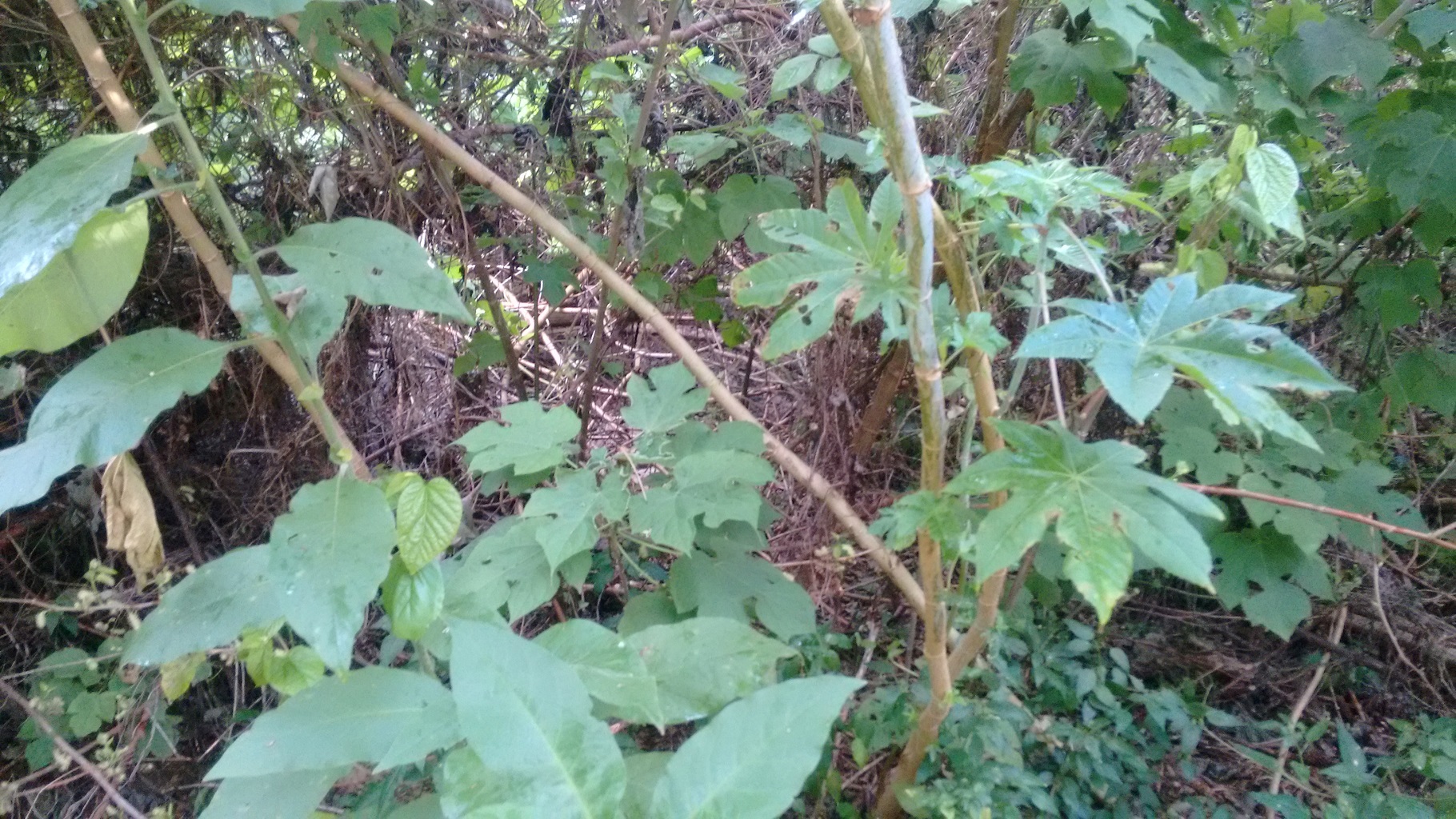
The story so far
A small infestation was first identified in the upper Wonga Creek sub catchment sclerophyll forest in the mid 1970’s.
Further sightings were observed over the years but today Anzac Tree daisy is well established across the upper Wonga Creek catchment. It has moved into the gullies and Wonga Creek itself.
Several infestations have been assessed as being a potential threat to all the ecosystems in the sub catchment.
The Anzac Tree Daisy Project
In collaboration with Brisbane City Council (BCC) and SEQ Water, the MCCG has in 2017 secured funding from the State Government to support a new project initially in the upper Savages Road area to reduce the threats from Anzac Tree daisy. The project is seen as a collaborative effort with Healthy Land and Water, BCC and SEQ Water.
Several landholders have commenced weed management and SEQ Water officers have agreed to treat a nearby infestation on the catchment divide in the Gold Creek Water Reserve.
Parallel with on-ground work, a communication program has commenced to alert landholders and other stakeholders of this relatively new threat to the ecosystems of the catchment and nearby conservation reserves.
And in addition, a process is underway to identify the distribution of the Anzac Tree daisy in the Moggill creek catchment.
 Anzac Tree Daisy Project – update Sep 2017 (51 KB)
Anzac Tree Daisy Project – update Sep 2017 (51 KB)
What YOU can do
There are small things we can all do to prevent further spread of Anzac Tree daisy. Take a look at the following flyer to see what you can do:
 Anzac Tree Daisy WHAT YOU CAN DO (263 KB)
Anzac Tree Daisy WHAT YOU CAN DO (263 KB)
These pictures show the journey
The following photos were taken around Wonga Creek in September 2017. A characteristic of this Elphinstone Soil landscape is the steep slopes. Prior to white settlement it had dry vine rainforests with emergent Hoop Pines. Today there are only a few remnants remaining.
It is striking that the gully now is essentially a monoculture of Anzac Tree daisy which demonstrates how invasive/competitive the species is in this environment and past land use.
The first 5 photos were taken sequentially going up the slope from the riparian zone on the edge of Wonga Creek. These are all very healthy Anzac Tree daisy infestations with some glycine and a few wild tobacco bush.
The height (size) and stem thickness of plants in these photos are markedly greater than those further up the gully, partly because the volcanic soils were deeper (better moisture holding capacity and nutrients) than further up the rocky gully. In these parts the infestations were just as dense but shorter and thinner stemmed.
| 1 | 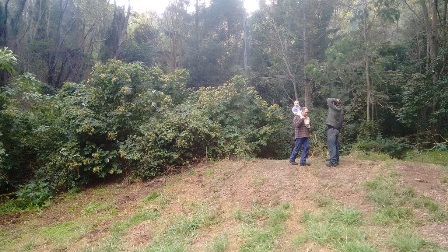 |
| 2 | 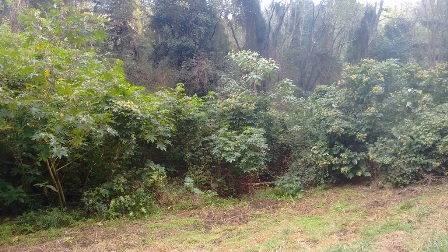 |
| 3 | 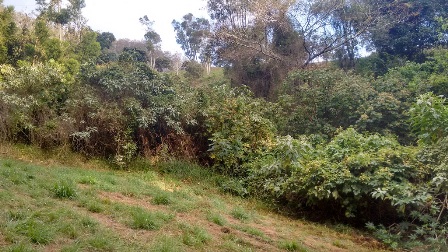 |
| 4 | 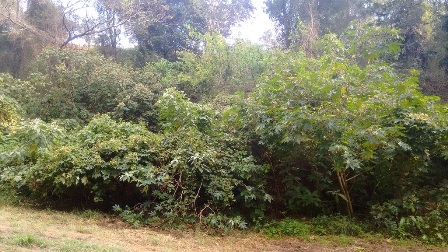 |
| 5 |  |
The following photos show the same sites immediately after clearing. Much of the cut plant material in the lower part has been pulled out of the likely water carrying part of the gully, and will be wrapped in plastic and solarised.
The final photo shows the infested gully continuing up past the neighbour’s house to near the top of the slope. In some recovering forest near the gully the anzac daisy has invaded but not with the same density.
| 6 | 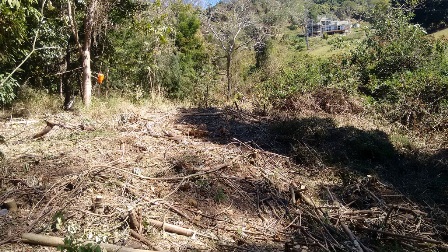 |
| 7 | 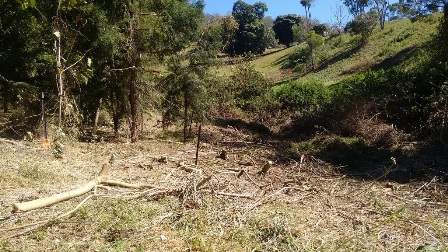 |
| 8 | 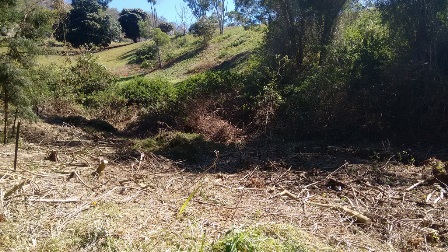 |
| 9 | 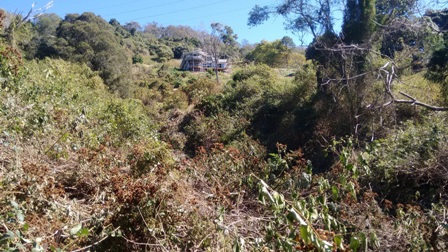 |
Project Manager Adrian Web describes the next steps for the photographed areas: “Now that we have finally had some spring rains, we will await Anzac Tree daisy seedling growth to about 200 mm height before spraying. The cut stems will provide quite good erosion control. Then we can replant areas where necessary with locally occurring ground, shrub and canopy species.”
Note: You can dowload a copy of Biosecurity Queensland factsheet on Anzac Tree daisy from our Plants page.

